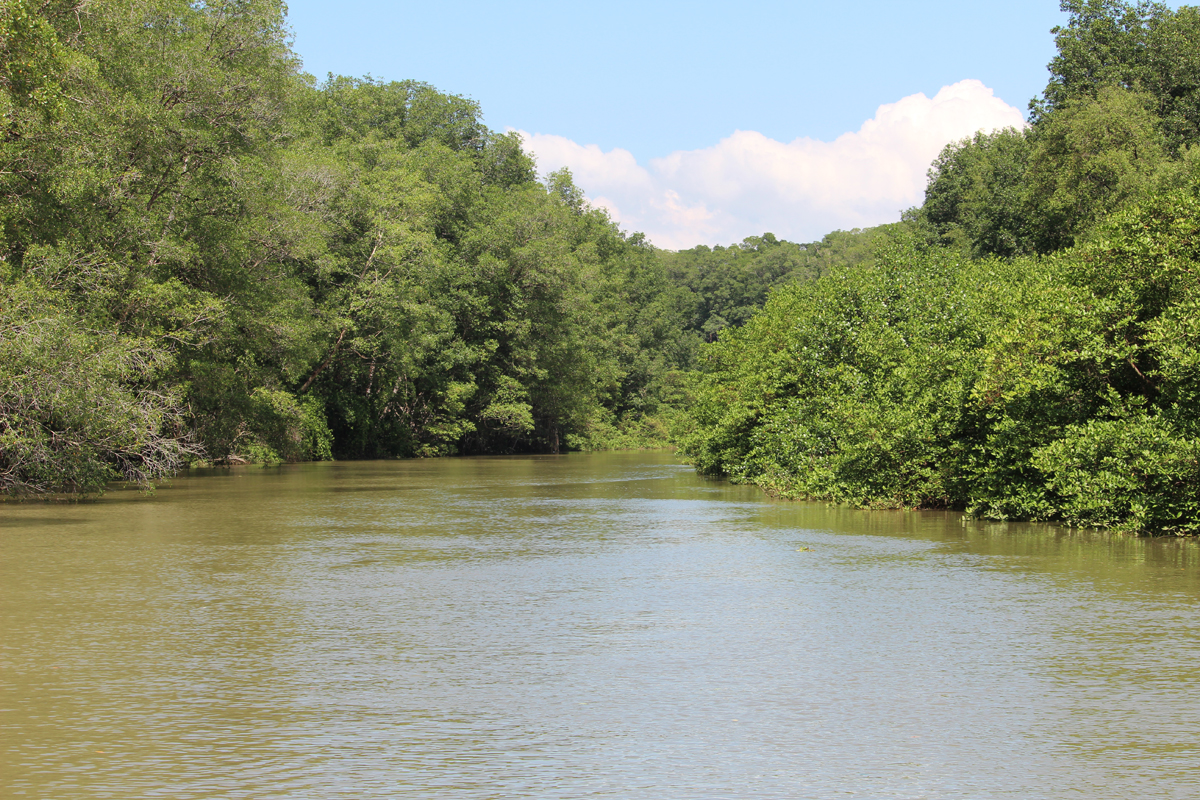The next stop in our Panama Canal cruise, after leaving Panama, was Puntarenas, Costa Rica. We had booked something called Tárcoles River: An Eco Adventure, one of eleven different excursions available at this port of call. It is promoted as Jungle Crocodile Safari, which is a bit of a misnomer. But they also promote it as a Bird Watching and Tropical Mangrove Boat Tour and it is as a bird watching adventure that this excursion should be taken. Birds abound and when you board the boat, you are given a Bird Guide which shows 61 species of birds that you might encounter there.
 |
 |
The tour starts with an hour long bus ride to the Tárcoles River. There are a number of tour operators along the river and when we reached our destination, we took a short walk through a lush jungle garden to our tour boat.

Our boat then took us out on the Tárcoles River for a 90 minute tour. We headed up river and soon spotted our first crocodile. Most of the crocs we encountered (less than a half dozen) were just lazing in the river looking much like a log.

If you’re really keen on a crocodile adventure, this is not the tour for you. But if you are an avid birder, you’ll find many birds to look for. Though the bird guide lists 61 different birds you might spot here, we probably spotted about ten different species. Many can be found sitting in the shrubbery along the shore.

Costa Rica is covered by lush jungle, however the Tárcoles River has become very polluted. We saw old tires and other debris scattered along the shore and the river itself is an ugly brown color and certainly not a place one would want to swim, even if there were no crocodiles. A search on Google found reports that the Tárcoles is, in fact, the most contaminated river in Central America.
Most of the pollution comes from San Jose, Costa Rica’s capital city and home to fifty percent of its population. A report in the Costa Rica Star from 2016 notes what is dumped into the river: “Bottles, shoes, plastic containers, tires, toys, clothes, straws, umbrellas, brooms, electronic appliances; the list goes on and on. In 2007 the Bridgestone Company organized a general cleaning of the area and gathered 1000 tires.”
Given its condition, it is astounding what a wonderful assortment of wildlife make their home nearby.

Besides birds, you’ll also see banana groves and lizards, including iguanas. We spotted some horses along the river, probably from a nearby farm, and a couple of groups of recreational fishermen, though I don’t know why anyone would want to eat anything caught in this river.


But it was the bird population that was the most vibrant on the Tárcoles.


After cruising around for a while up river, we headed back down the river all the way to the coast. Along the way our eagle-eyed guide spotted a toucan in a tree at a fair distance from us. I could barely catch it with the zoom lens on my camera.
At the mouth of the river is the Gulf of Nicoya on the Pacific Ocean. Here birds covered entire trees along the shore, fish loving birds like the pelican.


After our tour completed, we went through the obligatory gift shop, which featured a couple of marimba players, and back on the bus for the trip back to the port.

We did see quite a few birds and a few crocodiles and other creatures, but overall, this was a bit of a lack-lustre tour. One of my friends who has lived in Costa Rica told me that the Puntarenas region is the least desirable place to visit in the country, largely because of the pollution.
We had opted for this particular tour because it involved a shorter bus ride to and from the excursion, but if we were to do it again, we would pay a bit more and travel a bit further inland to catch one of the other excursions, maybe the Hummingbird Gardens, Butterfly and Frog Park or A Walk in the Clouds or Costa Rica From the Sky.
